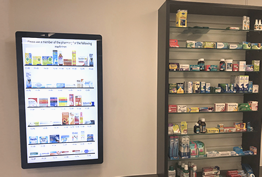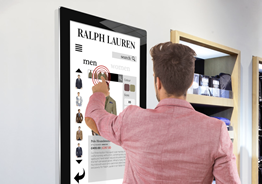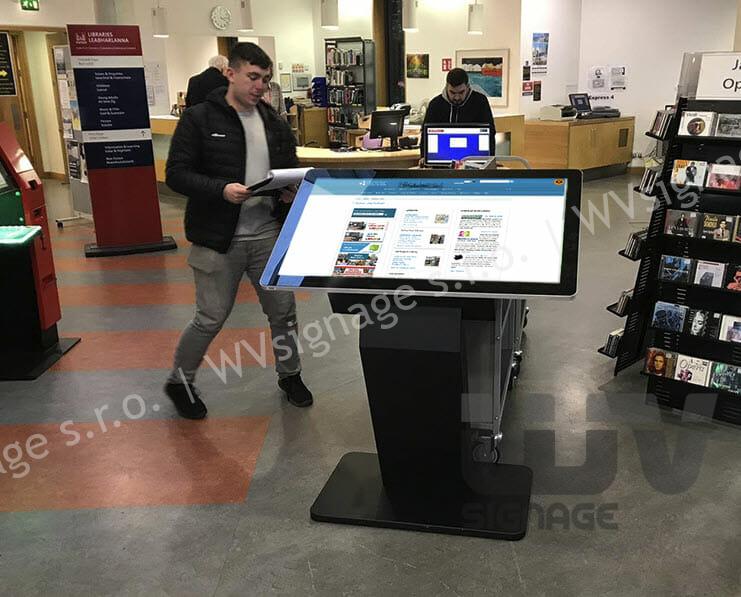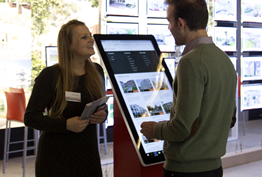Digital content is the future of retail as it shortens the line between offline and online space. It creates a “phygital” environment that can collect input from customers who visit the brick-and-mortar store, analyze it, process it and display the most appropriate messages at the most appropriate time to the appropriate audience.
 Before 2020, when the keyword of the year was “pandemic”, we had already been talking about digital transformation, the retail apocalypse, omnichannel strategy, customer centricity and several other topics that have been popping up on social media, conferences, events and trade shows for quite some time. On this wave, many experts and opportunists started to emerge, using all these notions to try to predict future trends in retail on the one hand, and on the other hand to give less technological operations the tools to fight against the big platforms that we are all familiar with, such as Amazon.
Before 2020, when the keyword of the year was “pandemic”, we had already been talking about digital transformation, the retail apocalypse, omnichannel strategy, customer centricity and several other topics that have been popping up on social media, conferences, events and trade shows for quite some time. On this wave, many experts and opportunists started to emerge, using all these notions to try to predict future trends in retail on the one hand, and on the other hand to give less technological operations the tools to fight against the big platforms that we are all familiar with, such as Amazon.
After predicting a miserable end for retail, let’s say traditional retail, such as the end of shopping malls and “digital transformation or bust”, the pandemic has arrived and fulfilled all the predictions that were forecast. However, it turned out that with the pandemic came security measures, capacity checks and a massive increase in online sales. With online sales, the business of logistics and delivery companies has grown even more. Some industries have seen their business grow not only online but also in brick-and-mortar outlets such as supermarkets.
It was at this time that brick-and-mortar establishments began looking for ways to tell customers to wear masks, use hand sanitizers, keep their distance, tell them that the store was full and to wait, and even let them know if their order was ready for pickup. And how to convey all this in physical space? You have several options: you can either repeat “please put on your drape” to employees hundreds of times a day, you can put up warning posters all over the shop, you can employ staff to count and check people, or you can transform all these actions into one by using digital signage.
 With a strategically placed digital dashboard on the shop floor, you can inform customers in real time about capacity, COVID-19 countermeasures, staff changes, marketing communications, and any information that the retailer wants to communicate to its customers and employees. All while drastically reducing the amount of paper needed to produce countless informational posters, and with the ability to impact physical space in the same way as through a website or mobile app.
With a strategically placed digital dashboard on the shop floor, you can inform customers in real time about capacity, COVID-19 countermeasures, staff changes, marketing communications, and any information that the retailer wants to communicate to its customers and employees. All while drastically reducing the amount of paper needed to produce countless informational posters, and with the ability to impact physical space in the same way as through a website or mobile app.
So far, we’ve talked about the past and how digital signage has helped many retailers communicate more effectively with their customers and employees. Now let’s talk about the future.
One more small mention of the past: at the end of the 90. years and at the beginning of the new millennium, every company wanted to have a website “because they just had to have one”. Nowadays, a similar situation has arisen in digital signage: every company wants to project its own digital content, implement omnichannel marketing, implement digital transformation and other key elements that appear in the media. If this is the only argument for implementing a digital signage ecosystem, you’re not doing it right.
 Digital content represents the future of retail as it shortens the line between offline and online space. With a well-configured digital signage system, we can collect input from customers who visit a brick-and-mortar store, analyze it, process it, and display the most appropriate messages at the most appropriate time to the appropriate audience. What does it look like? It looks like a merchant-customer interaction in the online world. Digital content, and I emphasize well-configured digital content, allows you to bring brick-and-mortar traffic closer to a website or online store. And therein lies the future of retail: if during the predictions of the retail apocalypse there was only talk of the demise of offline sales and the triumph of online commerce, digital signage brings a third player into the fray: stores equipped with digital panels or, as the new term coined in this context dictates, “phygital” stores. A term I personally dislike, but which allows me to properly name what I’m talking about.
Digital content represents the future of retail as it shortens the line between offline and online space. With a well-configured digital signage system, we can collect input from customers who visit a brick-and-mortar store, analyze it, process it, and display the most appropriate messages at the most appropriate time to the appropriate audience. What does it look like? It looks like a merchant-customer interaction in the online world. Digital content, and I emphasize well-configured digital content, allows you to bring brick-and-mortar traffic closer to a website or online store. And therein lies the future of retail: if during the predictions of the retail apocalypse there was only talk of the demise of offline sales and the triumph of online commerce, digital signage brings a third player into the fray: stores equipped with digital panels or, as the new term coined in this context dictates, “phygital” stores. A term I personally dislike, but which allows me to properly name what I’m talking about.
 And what kind of “phygital” shop is it? It is a brick-and-mortar store that, thanks to a well-configured digital system with a coherent strategy, allows you to create and measure customer behaviour during their visit to the store and, in addition, use this information in collaboration with the online channel. Surprise! Omnichannel marketing and digital transformation in one. In short: the future of retail.
And what kind of “phygital” shop is it? It is a brick-and-mortar store that, thanks to a well-configured digital system with a coherent strategy, allows you to create and measure customer behaviour during their visit to the store and, in addition, use this information in collaboration with the online channel. Surprise! Omnichannel marketing and digital transformation in one. In short: the future of retail.
Let’s illustrate this with an example of a customer who comes into the store to make a purchase. At the entrance there is a screen that informs about the free capacity in the shop. At any given time, the maximum capacity is not reached and the customer can enter.
Inside, he scans a QR code from his mobile phone on the display, then is redirected to a website (or app) that informs him of the queue and the average waiting time. Facing the relevant department, screens of various sizes (from electronic labels to huge and eye-catching LED panels) display the various promotions, offers and sales information available at the time in the store itself.
When he arrives at the relevant department, the current order is displayed on the screen and an alert pops up on his mobile phone that it’s his turn soon. After placing the order, the customer proceeds to the checkout, where they are shown which checkout to pay at. Throughout the shopping experience, cameras and sensors record information, always respecting data protection law, and send it to the relevant departments to analyse, as in the online space, how best to deliver the customer experience.
Screening digital content is the future of retail and it’s available to you.



